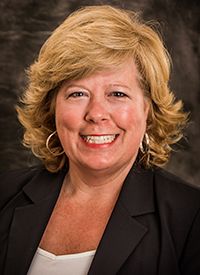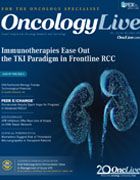It's Time to Get Serious About New Rules for Handling Hazardous Drugs
Implementation of new standards for handling hazardous drugs in healthcare facilities is coming closer to reality now that the calendar has flipped to 2019.
Julie Cothren, DPh

Julie Cothren, DPh
Implementation of new standards for handling hazardous drugs (HDs) in healthcare facilities is coming closer to reality now that the calendar has flipped to 2019. United States Pharmacopeial Convention (USP) General Chapter <800> focuses on protecting healthcare workers through the safe handling of HDs in healthcare settings (Figure).
Originally scheduled for release in July 2018, USP <800> was postponed so its release would align with the revised version of USP <797>, the chapter that concerns patient safety and the integrity of compounded sterile drugs. Currently, the implementation date for both chapters is December 1, 2019.
Figure. Essential Groundwork For USP <800> Implementation
There is no longer a compliance exemption for low-volume hazardous sterile compounding, as is currently allowed in USP <797>; however, oncology clinics may be held to less stringent standards if all admixtures are prepared for use within 12 hours. If a clinic receives, handles, stores, compounds, dispenses, administers, or disposes of HDs, it will be affected by USP <800> standards, and this will be far-reaching and costly for many practices.
Many Areas Will Be Affected
Some practices may face significant challenges meeting the stringent requirements for the mixing room. The new regulations require a hood vented to the outside environment, which may be a major logistical challenge for practices with no easy access to the outside. Smaller, older clinics may also face issues trying to allocate dedicated space in an already crowded facility.
Additionally, operational areas will experience cost increases. Costs for personal protective equipment will rise and continue to do so. Closed-system transfer devices (CSTDs) for administering drugs will be required, adding more expense to the supply category. Practices will also see an increase in expenses for cleaning supplies, as the chapter now requires a 4-step process that includes deactivation, decontamination, cleaning, and disinfection.
Policies and procedures pertaining to staff must be created or adjusted to meet the new standards. A rigorous training program must be developed to ensure that new hires and current employees understand the new requirements and the risks involved in handling HDs. Special attention should be paid to the mixing area because the requirements differ from those currently in place.
Preparing for Implementation
Although many practices are already on the path to compliance, some are just now investigating what must be done. Here are a few suggestions to make the task more manageable:
Identify hazardous drugs. Refer to the National Institute for Occupational Safety and Health (NIOSH) list for guidance. The NIOSH deems a drug hazardous if it has 1 of the following characteristics: carcinogenicity, teratogenicity, reproductive toxicity in humans, organ toxicity at low doses, or genotoxicity. New drugs that mimic existing hazardous drugs in structure or toxicity are also deemed hazardous. If a drug is on table 1 of the NIOSH list and requires any type of manipulation, it must be treated as hazardous with all the containment strategies set forth in the chapter.1
Determine any necessary engineering and facility control changes. The chapter allows 2 potential room configurations. At a minimum, HDs must be mixed inside a biologic safety cabinet (BSC) that provides an ISO class 5 or better air quality. The BSC must be externally vented to the outside environment and be in a negative pressure room with at least 12 air changes per hour. This configuration is referred to as a containment segregated compounding area. The other configuration option involves having the BSC in an ISO class 7 buffer room with an ISO class 7 anteroom. Most of the up-front cost for the clinic to become compliant will probably come from these requirements. Clinics might have to construct a space, buy a new hood, or renovate an existing space to meet the standard. The amount that practices are spending on facility upgrades varies greatly, with some budgeting as little as $25,000 to $50,000, whereas others are spending over a million dollars. Three practices with whom I have recently been in touch were all in the $100,000 range.
Evaluate CSTDs and determine clinic preference. USP <800> recommends using CSTDs when compounding or admixing HDs and requires their use when administering HDs. Currently there is no published universal performance standard for evaluating CSTD containment, so clinics are urged to review published papers and articles that include independent peer-reviewed studies. Many manufacturers will allow a clinic to use their devices for a trial period. Solicit input from your clinical team following those evaluations and assess integration of a device within the current workflow. Finally, review current vendor contracts and compare pricing.
Identify a designated person. USP <800> requires each clinic to have a designated person to oversee implementation and ongoing compliance with the chapter. There is no requirement concerning who this person should be; however, the role requires a thorough understanding of the standard and the ability to implement the appropriate policies and procedures. Each entity will need to decide if this person should be a nurse, technician, pharmacist, practice administrator, or someone else. The designated person will be the central coordinator for making sure all personnel who handle HDs throughout the clinic are properly trained and follow all state and federal standards.
Write new policies and procedures. Clinics are required to write and maintain standard operating procedures (SOPs) for safe handling of HDs in all situations throughout the facility. Sixteen topics in the chapter must be addressed, including areas such as an occupational safety program, receipt of HDs, transport of HDs, and the use and maintenance of proper engineering controls. A documented review of these SOPs must be made at least every 12 months by the designated person.
Preparing for implementation is not easy when also running a busy clinic. At McKesson, we support oncology practices by making our team of clinical specialists available as resources. We offer webinars and tools on our website, including a readiness assessment, to provide guidance.
Get Started Today
According to the Centers for Disease Control and Prevention, approximately 8 million US healthcare workers are potentially exposed to hazardous drugs in the workplace.2
Although there is still some debate within ASCO and among physician groups as to whether every aspect of the standard is necessary, USP <800> is a step in the right direction. At the end of the day, this is all about protecting workers and patients, which is the right thing to do.
Some oncology practices have embraced the new standards and made the necessary changes; others are waiting for the final versions, hoping for another postponement. These practices need to start taking steps toward compliance now, even if they move forward a little at a time. USP <797> and USP <800> represent the new reality for sterile preparation and HD management, and they are not going away. Waiting to achieve compliance will just make the task more challenging.
References
- NIOSH list of antineoplastic and other hazardous drugs in healthcare settings, 2016. Centers for Disease Control and Prevention website. cdc.gov/niosh/docs/2016-161/pdfs/2016-161.pdf. Published 2016. Accessed March 20, 2019.
- Hazardous drug exposures in healthcare. Centers for Disease Control and Prevention website. cdc.gov/niosh/topics/hazdrug/default. html. Updated September 27, 2018. Accessed March 20, 2019.




